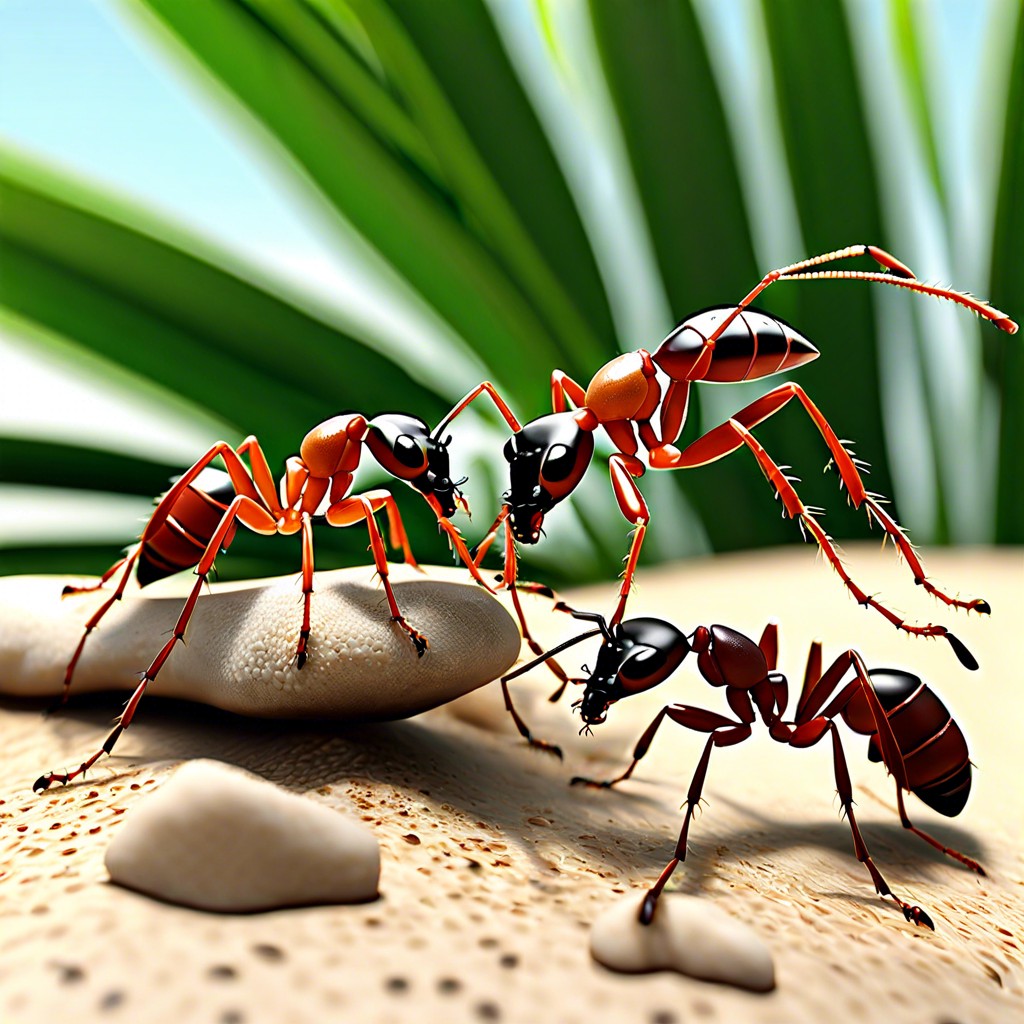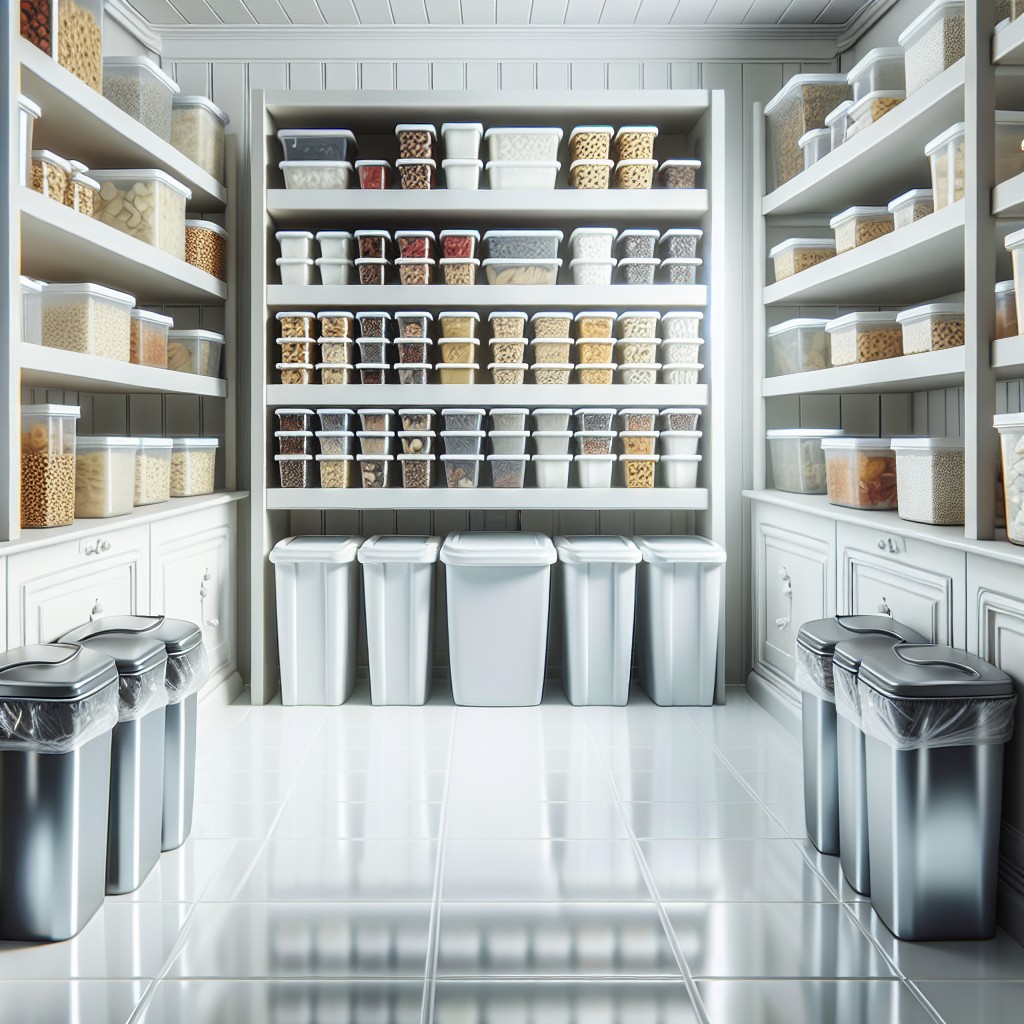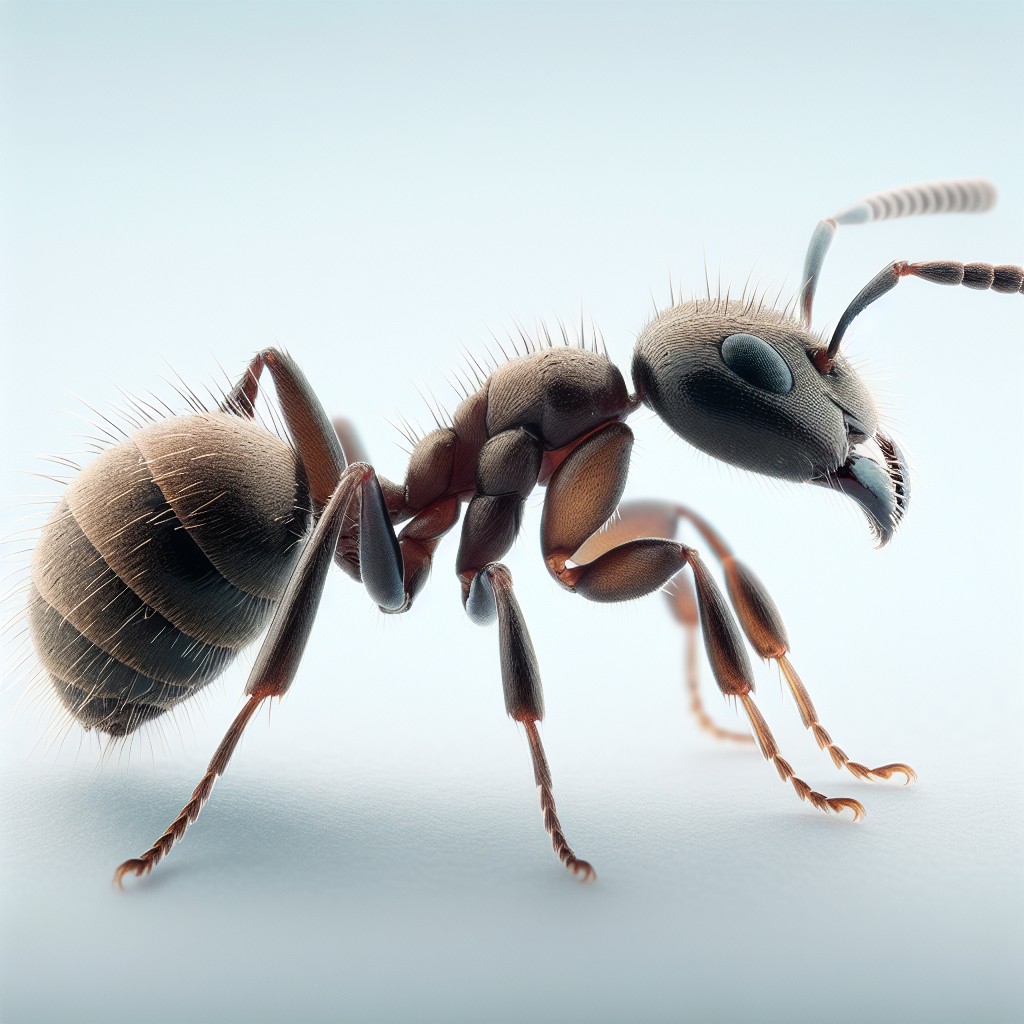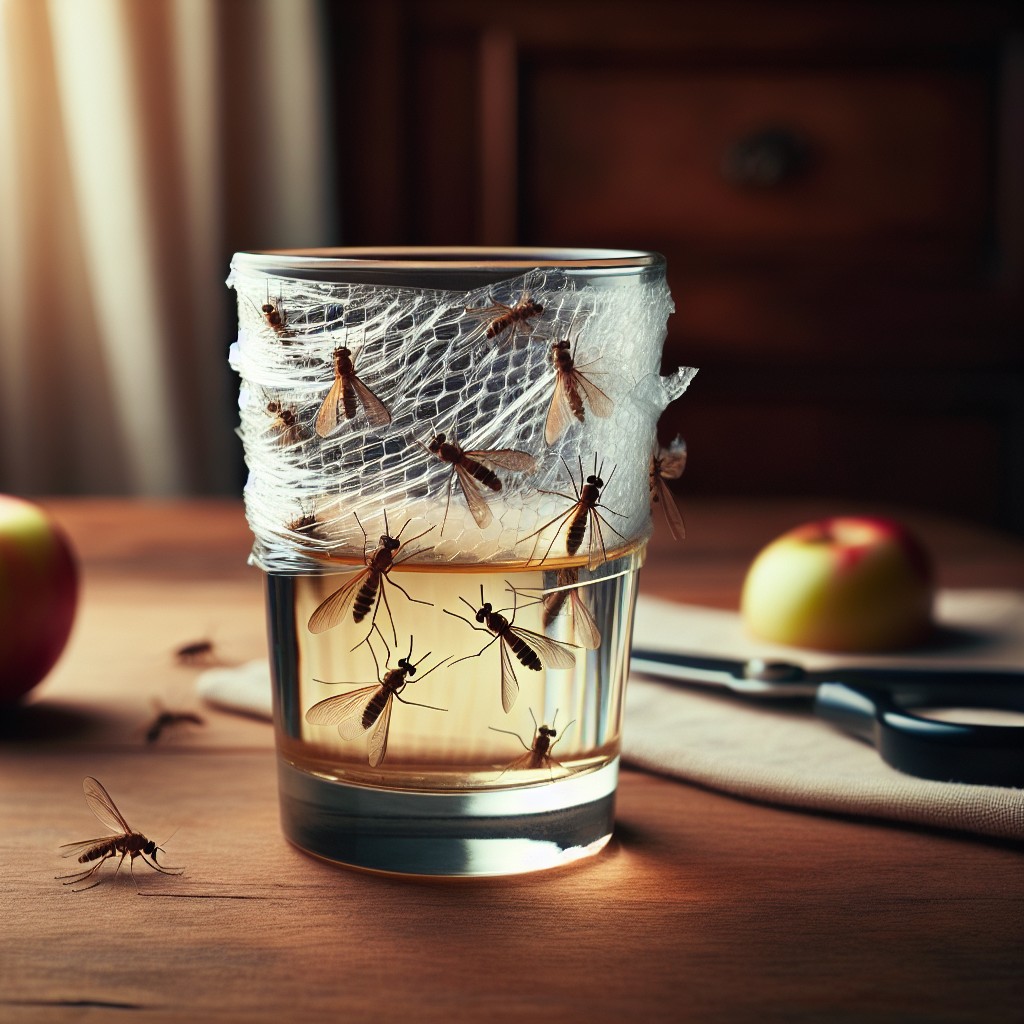Last updated on
Learn how to identify and get rid of sugar ants in your home easily and effectively.
Picture this: you stroll into your kitchen for a midnight snack and there they are—an army of sugar ants, turning your countertop into an ant expressway. Frustrating, right? Fear not! This little guide will uncover why your home is a sugar ant hotspot, identify the common culprits, and provide effective prevention tips. Plus, we’ll dive into practical DIY methods and when to call in the pros. Let’s get those pint-sized invaders under control!
Key takeaways:
- Sugar ants love sugar, grease, and protein sources.
- Regularly clean surfaces and take out trash to deter ants.
- Store pet food in airtight containers to avoid infestations.
- Fix water leaks and moisture spots to discourage ant gatherings.
- Use DIY ant bait or seek professional help as needed.
What's Inside
What Are Sugar Ants?

These tiny invaders are infamous for their relentless love of sweets. Measuring just about 2 to 15 millimeters, they’re small but mighty in numbers. Their color ranges from light brown to black, and they generally have large eyes and antennae, which help them scout for sugary treasures.
You might also hear them called “pavement ants” or “odorous house ants”. While their official name is less fun, it’s good to know in case you need to geek out at your next dinner party.
Interestingly, their colonies can have tens of thousands of members. That’s enough ants to throw quite the kitchen rager! And, like clockwork, they march in looking for crumbs, sugar spills, and any other edible goodies you’ve unwittingly left out.
Despite their name, they won’t say no to a greasy snack or a protein-packed morsel. Just add it to their never-ending buffet.
Common Ant Attractants
Food residues and spills are like an invitation to a backyard barbecue, but for ants. A few cookie crumbs, soda spills, or that tiny piece of toast you dropped under the table? Sugar ants will find them faster than you can say “clean-up.”
Pet food is another major draw. If you’ve got a cat or dog, their food bowls can be a gourmet buffet for these tiny invaders. Those bits of kibble you thought Fido had finished? Prime ant territory.
Water sources also attract sugar ants. A leaky faucet, condensation on pipes, or even a damp sponge left in the sink can become an oasis for them. It’s like the ants have their own tiny travel blogs listing the best hydration spots around your kitchen.
Lastly, it’s not just sugars that bring them in; grease and protein sources are just as tempting. Leftover bacon grease, scraps of meat, or even an unwashed skillet can lure them inside. Remember, your culinary masterpiece might be their next easy meal!
Food Residues and Spills
Crumbs on the counter? Spilled juice? Sugar ants have a sixth sense for these things. They’re like tiny, militant cleanup crews, except they leave more behind than they take. One drop of soda on the floor is practically a beacon for them.
Wipe down surfaces regularly, especially after meals. Even that invisible sticky patch from where you put your spoon can draw them in. Clean under appliances too. Toaster crumbs are an all-you-can-eat buffet for these little invaders.
Fruit bowls need attention. Overripe fruit releases sweet aromas that attract sugar ants like a magnet. If you notice a spontaneous fruit fly party, sugar ants are probably RSVPing too.
Take out the trash. Ants will happily explore your trash can for goodies, especially if there are sweet, sticky residues inside. Cleaning your trash can every now and then can keep the ants at bay.
Keep pet feeding areas tidy. Pets don’t always have the best table manners, so leftover pet food can be an easy target for sugar ants. A quick wipe down after Fido’s breakfast can do wonders.
Pet Food
Pet food is like a gourmet buffet for sugar ants. They are drawn to both dry kibble and moist food, so no pet owner is safe! Here are a few tips to keep those pesky critters at bay:
Store pet food in airtight containers. A tight seal means no sniffing out dinner for ants.
Clean up after your pet’s mealtime. A few crumbs might as well be a flashing neon sign inviting ants to feast.
Use a pet food mat. It helps contain spills and crumbs, making cleanup easier and faster.
Consider feeding your pet at set times rather than leaving food out all day. This limits opportunities for ants to raid the bowl.
Elevate the feeding bowl if possible. Placing it on a stand can make it just a bit harder for ants to reach.
By following these simple steps, you’ll keep your pet well-fed and those unwelcome ant guests out of your home.
Water Sources
Water is another magnet for sugar ants. They aren’t marathon runners, so they love to bunker down near reliable hydration spots.
Think of the usual suspects:
Kitchen sinks often have those tiny, unseen puddles under faucets.
Bathrooms, with their never-quite-dry floors and sinks, are a sugar ant spa.
Pet water bowls can be like an open bar at happy hour for ants.
Even condensation around pipes is like a refreshing drink station for them.
Addressing these sources involves some simple strategies. Fix any leaky pipes or faucets. Keep pet bowls dry when not in use. Regularly wipe down sinks and bathroom floors.
Just a little extra vigilance can make your space decidedly less appealing to these thirsty little intruders.
Grease and Protein Sources
You’d think sugar ants would simply stick to the sweet stuff, right? Not so fast. These tiny invaders are surprisingly enthusiastic about grease and protein sources too. Imagine having a party and not inviting them, but they still turn up for the charcuterie board.
Leftover bacon grease on the stovetop? Sugar ants are all over it. Didn’t wipe down the counter after slicing up some steak? They’re already planning their protein-packed picnic. Even a poorly sealed trash bag with meat scraps can become their five-star buffet.
Pet food is another magnet. Think you’re safe because it’s labeled “high protein”? Think again. Sugar ants are equal opportunity diners, and your cat’s kibble or dog’s dinner can make the perfect feast.
Keep your kitchen tidy and these greasy goodies out of reach. Because let’s face it, having uninvited ants at your next barbecue isn’t exactly a recipe for success.
Common Hotspots in the Home
Kitchens are like Disneyland for sugar ants. Crumbs on the counter? Jackpot! Juice spills? Even better! Don’t forget the pantry. Unsealed food containers are practically rolling out the red carpet for these tiny invaders.
Bathrooms? Not off the hook. Sugar ants love moisture. Think about all those tiny water drops in your sink or near the tub. They’re moisture mini-mansions waiting to happen.
Pet areas are another candy land. Ever seen a dog eat perfectly clean? Didn’t think so. Leftover kibble is a buffet for sugar ants.
Windowsills can also be hot real estate. Tiny cracks are like secret portals into your home. Combine that with any indoor plants, and sugar ants might just move in permanently.
Garbage bins—these are the five-star dining options for the ant world. Food waste plus a handy container equals easy access and no reservation needed.
Trust me, sugar ants have an internal GPS for sniffing out these prime zones.
Ways to Prevent Sugar Ants
Seal any cracks and gaps. Sugar ants are tiny escape artists. Caulk, weatherstrip, and eliminate all those sneaky entry points they love so much.
Store food properly. Use airtight containers for your sugar, cereals, and snacks. No need to host a sugar ant buffet in your pantry!
Clean up spills right away. Ants have a radar for sticky residues. Give countertops a quick wipe after cooking and snack time to avoid drawing a crowd.
Take out the trash. Stinky trash cans? That’s an all-you-can-eat buffet for sugar ants. Empty trash bins regularly and keep them tightly sealed.
Manage moisture. Ants need water too. Fix any leaky faucets, and don’t overwater your plants. Damp spots might as well be marked “Ant Oasis”.
Declutter. Ants love hiding spots, so keeping your home tidy makes it less attractive to these tiny guests. Plus, who doesn’t love a good spring cleaning?
Pet food vigilance. Don’t leave pet food out longer than necessary. Sugar ants are equal-opportunity diners and will flock to Fluffy’s bowl too! Just another reason to pamper your pets by cleaning up after them.
How to Get Rid of Sugar Ants
Begin by identifying where they are coming from and sealing those entry points. Caulk up cracks, gaps, and crevices around windows, doors, and foundations.
Next, keep your kitchen as clean as a whistle. Wipe up spills immediately, sweep up crumbs, and take out the trash regularly. Don’t give these tiny invaders a buffet!
Consider making a homemade ant bait. Mix equal parts of borax and sugar with water, then place the mixture near the ant trails. Ants will carry this cocktail back to their nests, sharing it with their friends, and soon, the problem is gone.
Store food in airtight containers. You’d be surprised how crafty these little guys are—they can find their way into almost any package.
Use natural deterrents. A few drops of essential oils like peppermint, tea tree, or lemon can work wonders when applied to entry points. Plus, it’ll make your home smell amazing!
If things get out of hand, calling in a professional pest control service might be your best bet. Sometimes, it’s good to leave it to the experts.
Finally, make sure to keep an eye on pet food dishes. Ants love them almost as much as your pets do! Clean up any spills promptly and consider placing the dish in a shallow dish of water to create a DIY moat that ants can’t cross.
Professional, Integrated Pest Management (IPM)
Got ants that think your kitchen is the hottest new restaurant in town? It might be time to call in the pros with Integrated Pest Management (IPM). This approach is like giving sugar ants a one-way ticket out of your house without the mess.
IPM focuses on long-term prevention. It combines the smarts of biological, cultural, physical, and chemical tools. Here are the highlights:
Identify the Pest: Knowing which ant is crashing your party is crucial. Different species need different tactics.
Monitor and Manage: Regularly check ant activity. Think of it as being the Sherlock Holmes of ants. Where are they coming from? Why now?
Preventive Action: Seal up the tiniest of entry points. Repair leaky faucets and keep food sealed. Not even a crumb buffet should be left out.
Less Chemical, More Control: Chemicals are the last resort. Instead, traps and baits take center stage. Safe for you, nightmare for ants.
Work with Nature: Consider natural predators. Ladybugs might be your new best friends. They’re tiny but fierce ant adversaries.
Love the benefits of a bug-free life. Bye-bye, ants!




